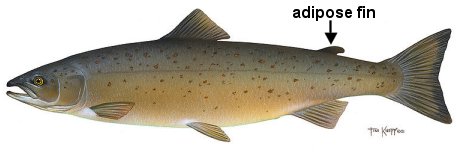
A recent article1 in the journal Nature reports on fossil eyes that were discovered in early Cambrian rock. Before I discuss the fossils themselves, I have to make it clear that these eyes are not like the eyes you and I have. You and I have simple eyes. This doesn’t mean they aren’t complex. It just means that each of our eyes has only one lens. In addition to people, many animals have simple eyes.
The fossils discussed in the article were of compound eyes, like the one shown in the picture above. Unlike simple eyes, compound eyes have many, many lenses. Each little “section” you see in the magnified view of the eye is a separate lens. Each lens focuses the light onto its own, separate light-sensitive tissue. For this reason, a compound eye can be thought of as a lot of tiny individual eyes, each of which is called an ommatidium (plural is ommatidia).
Now why would an animal want a compound eye? Well, it allows the animal to have a much wider view. Some insect compounds eyes, for example, allow the insect to see nearly everything around it – not only what is in front of it, but also what is above, below, and behind it.2 In addition, since the visual information is being processed by lots of little units rather than one big unit, a compound eye is much more efficient at developing images, making it sensitive to very fast motion.3 This allows the insect to travel at high speeds without running into things, and it allows the insect to see even the slightest motion from both predators and prey. These advantages do come at a cost, however. The visual acuity and resolution of a compound eye is not as good as that of a simple eye.4
The article reports on seven compound eye fossils that were found in Cambrian rock. According to scientifically-irresponsible dating techniques, these rocks are supposedly 515 million years old. Nevertheless, the fossil eyes are incredibly advanced.



